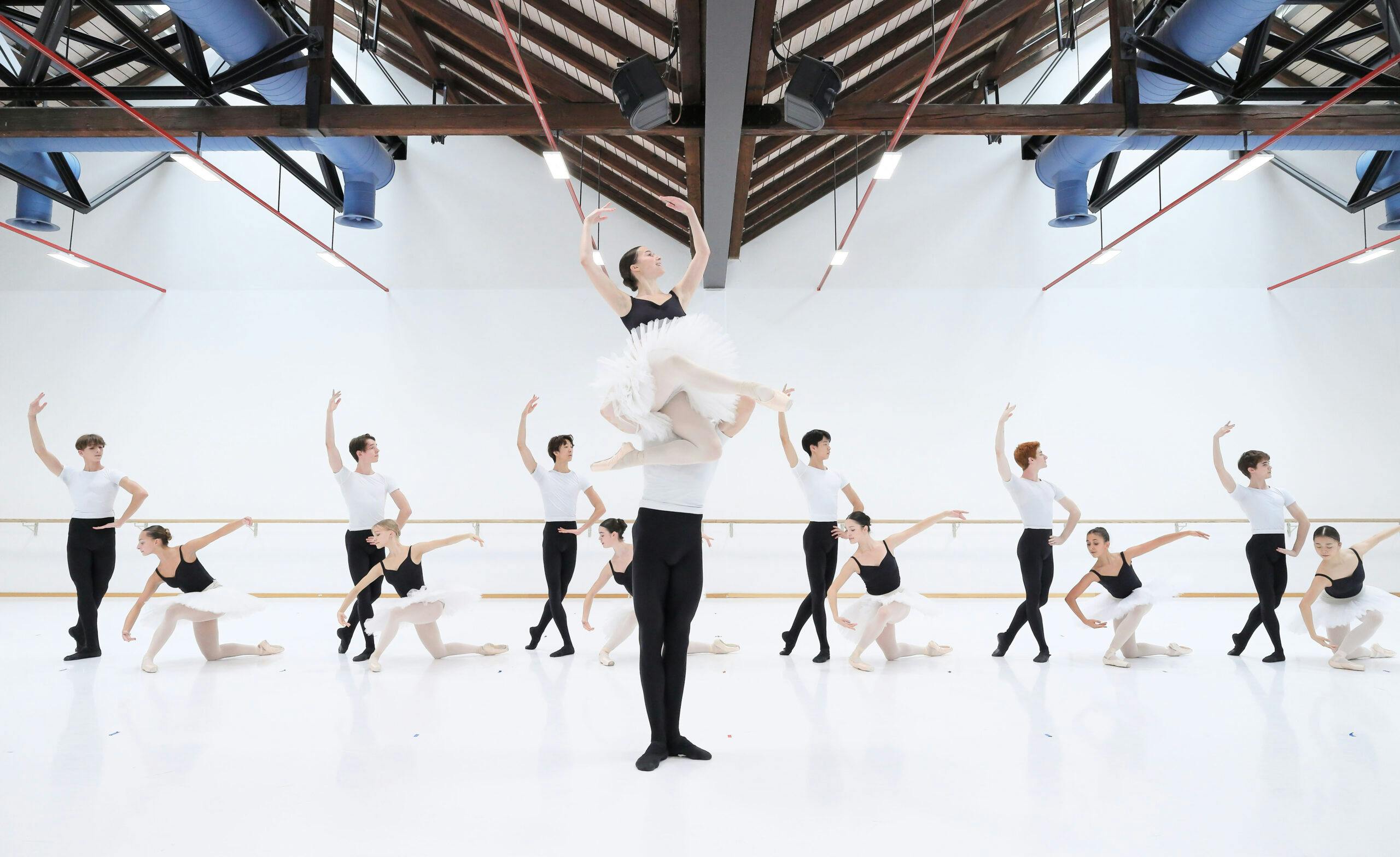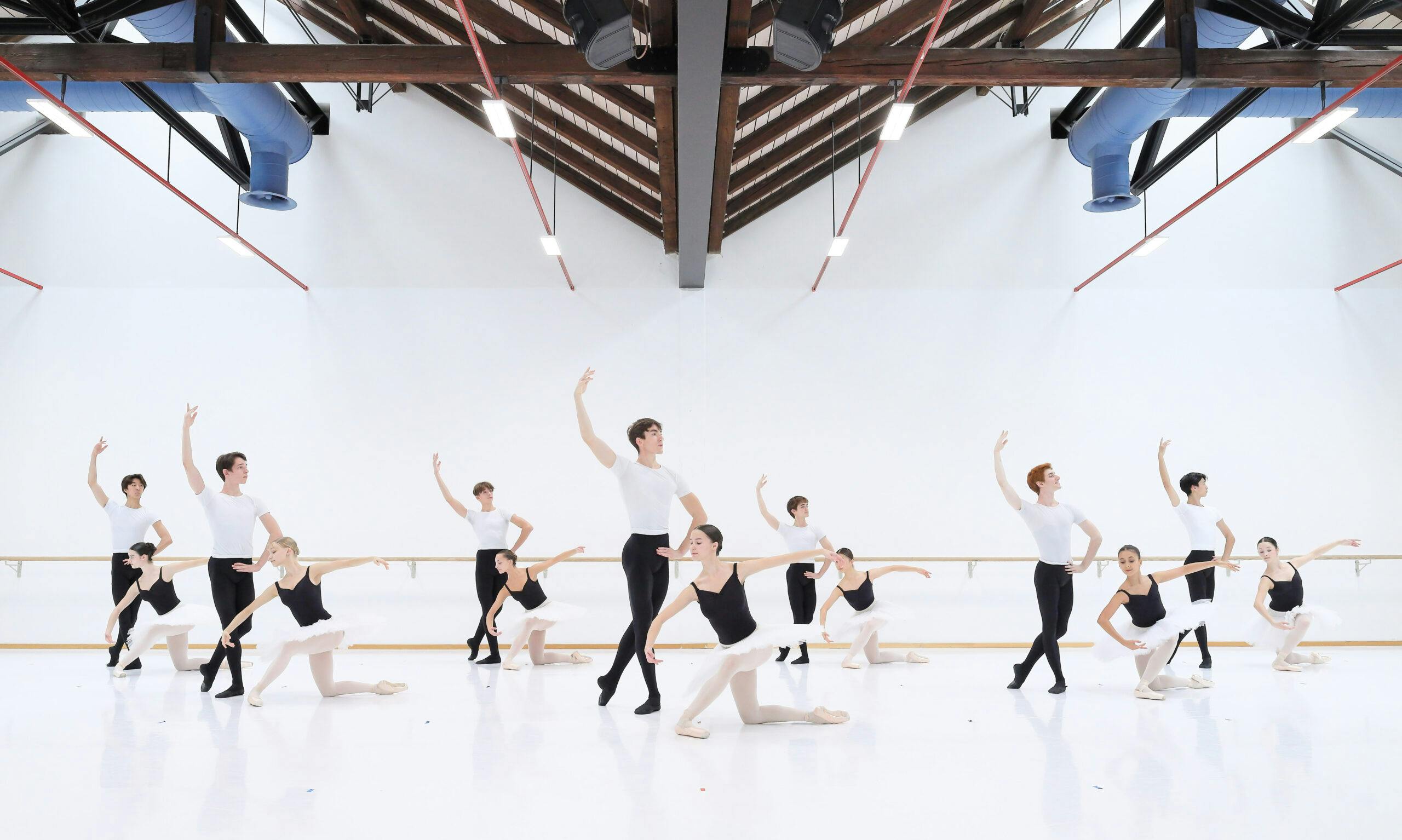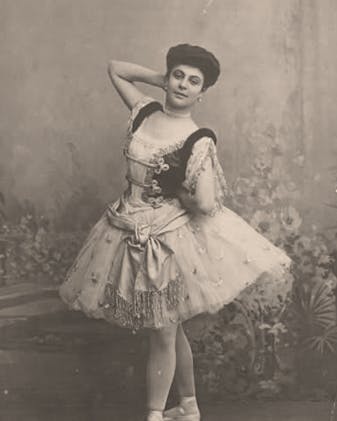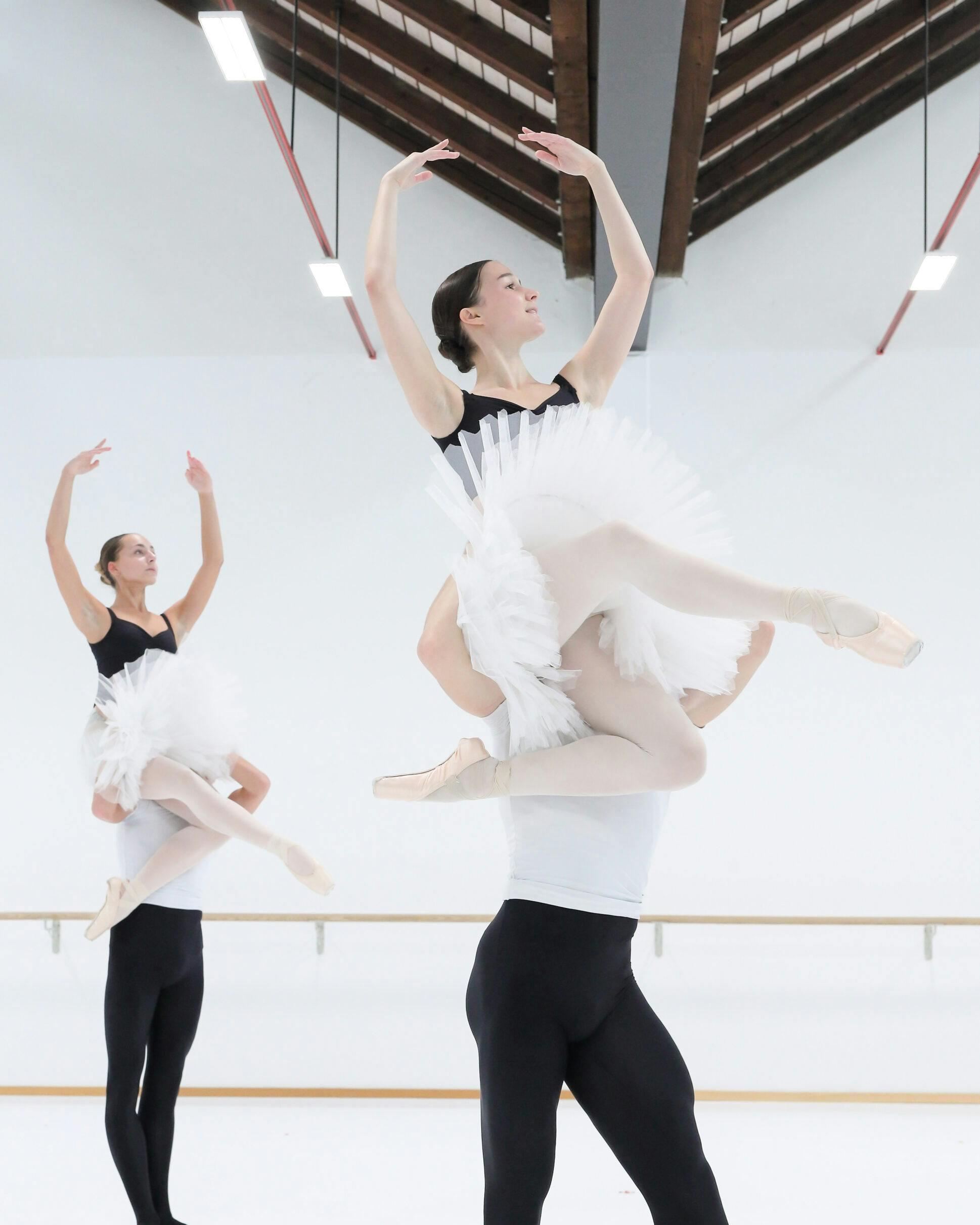Essay
Raymonda - climax and swan song
by Anna Beke
"Mr Petipa's creativity, his highly artistic taste and mastery, spoke in Raymonda in their full beauty and power. The balletmaster carefully avoided any 'stunts' striking for effect - everything in Raymonda is artistic, intelligent, and beautiful." (Theatre Echo, in: Petersburg Gazette, 8 January 1898)"

The era of the Imperial Ballet in St. Petersburg in the century before last is associated with numerous important names in classical dance, but the French dancer and choreographer Marius Petipa (1818-1910) is undisputedly its central figure. This is not only because he was active in Russia for over half a century from 1847 and shaped the local dance culture with his more than sixty works, but above all because the actual heyday of Russian ballet is linked to his person. Petipa is the founder of the “ballet à grand spectacle”, which is to be understood as a choreographic response to the great operas of the 19th century. The Tchaikovsky ballets «Sleeping Beauty» (1890), «Nutcracker» (1892) and «Swan Lake» (1895), the masterpieces of this period, were created in the heyday of the nineties. However, several decades had to pass before this peak was reached, as the Imperial Ballet was trapped in a rigidity of convention, especially in the 1970s and mid-1980s. For this reason, Petipa’s first almost forty years of creative work were initially characterised by rather isolated works such as «La Fille du Pharaon» (1862), «Le Corsaire» (1863), «Don Quixote» (1869), «La Bayadère» (1877) and «Paquita» (1881).

The fact that the less fruitful phase of Russian ballet came to an end in the mid-1980s and reached its triumphant climax with the Tchaikovsky ballets and «Raymonda» (1898), composed by Alexander Glazunov, is primarily due to two changes. Firstly, in 1885, after a long period without performances by foreign dancers in Russia, an Italian ballerina by the name of Virginia Zucchi broke the stagnation of the dance scene there with her sensational tour, and with her a wave of Italian virtuosos began to make guest appearances in Russia. From then on, these dancers remained in Russia for the long term and, with their technical virtuosity, characterised the gradually developing ‘typical Russian ballet style’. Secondly, the other decisive turning point for the breakthrough of classical ballet was the change of director at St. Petersburg’s Mariinsky Theatre in 1881, Ivan Vsevolozhsky. In particular, he was the initiator of the artistic collaboration between Petipa and Peter Ilyich Tchaikovsky and – after Tchaikovsky’s death in 1893 – Petipa and Glazunov. With the departure of Vsevolozhsky in 1899 and the assumption of his position by Vladimir Telyakovsky, the era of classical ballet came to an end shortly after its peak. The new artistic director left no stone unturned to replace Petipa, whom he considered outdated, with the younger Moscow choreographer Alexander Gorsky, whose new production of «Don Quixote» he demonstratively had brought to St. Petersburg in 1902. Petipa continued his work, but while his ballet «The Magic Mirror» (1903) was cancelled after the second performance, the work «La Romance d’un Bouton de rose et d’un Papillon», completed in 1904, did not even see its premiere.
New musical territory
Although Petipa’s last creative period was not a happy one, the most influential ballet choreographer of all time has nonetheless survived the centuries, and his works still form the basis of the canon of classical dance worldwide. The composers Tchaikovsky and Glazunov have undoubtedly also played a major role in the enduring success of Petipa’s masterpieces. Both no longer created primarily functional music for the so-called ‘number ballet’, but for the first time found characteristic musical themes or motifs for each piece with its particular plot and atmosphere. The predicate ‘danceable’, based on rhythm and catchy melodies, was no longer the only decisive factor; both composers delivered highly sophisticated, symphonically structured music that was able to create an atmospheric world of sound and even exist outside of the theatre auditorium.
The artistic synthesis of highly virtuosic dance and symphonically sophisticated composition became the true hallmark of classical ballet and at the same time the forerunner of 20th century ballet. “Dance is about dance” is the credo of 20th century neoclassical choreographers such as George Balanchine and Hans van Manen, but the Petipa works of the 1890s, above all the ballet «Raymonda», must be regarded as the model for this artistic attitude. First-class dancing and composition are enough for Petipa to realise a ballet that is capable of inspiring the audience.

Raymonda. Dance as a creative medium
No dance without a dancer. As always, the ballerina takes centre stage in Petipa’s swan song «Raymonda«, which he created in his 80th year. The unrivalled star is the interpreter of the title character, Pierina Legnani, who has had the St. Petersburg ballet world at her feet since her debut in «Cinderella» in 1893. The Prima Ballerina Assoluta made the greatest impression on Tamara Karsawina, the important Ballets Russes dancer who declared Legnani to be the role model of her generation in her 1930 memoirs:
This Italian ballerina [held] for over ten years successfully the stage as a prima ballerina assoluta. […] One of her tour de force was 32 fouettés. […] Legnani walked to the middle of the stage and took an undisguised preparation. […] Then a whole string of vertiginous pirouettes, marvellous in their precision […] worked the whole audience into ecstasies. Academically, such an exhibition of sheer acrobatics was inconsistent with purity of style; but the feat, as she performed it, had something elemental and heroic in its breathless daring. […] All the girls, big and small, constantly tried to do the 32 turns. In the evenings […] one constantly saw figures like turning Dervishes wherever a mirror was available. We turned in the dancing rooms, turned in the dressing room, turned in the dormitory, tumbling down after a few turns and beginning again.
«Raymonda» interweaves classical, demi-caractère and character dance in an exemplary manner and, thanks to its superb musical and choreographic quality, outshines even the simple secondary plot. Based on the libretto by Lidija Paschkowa and Marius Petipa, «Raymonda» tells the love triangle between the title character, the crusader Jean de Brienne – Raymonda’s fiancé – and the Saracen prince Abderakhman during the time of the Crusades; this in turn is set in medieval France in the 12th century.
As is so often the case with Petipa, this three-act ballet following on from «Sleeping Beauty» culminates in an extensive wedding divertissement, which is designed entirely to represent the technical dance refinements of the “danse d’école”. As is typical of Petipa’s “grand ballet”, «Raymonda« begins and ends with a so-called “colourful act” that drives the action forward, while in between there are scenes that concentrate purely on the dance without any major relevance to the plot, which are a relic of the romantic “ballet blanc”. Here in particular, in this last central ballet by Petipa, a clear influence of the Italian féeries can be discerned, large-scale ballet spectacles that primarily rely on technical dance bravura and opulent décor.
In addition to the two solo variations of the title character in the Petipa original, the “Grand Pas de dix Hongrois” from the third act is considered the centrepiece of the ballet. The students of the Ballet Academy of the Munich University of Music and Performing Arts, who will be dancing excerpts from «Raymonda» at this year’s autumn matinee, will also perform the so-called children’s dance, a special feature of the Munich adaptation by Ray Barra (born 1930) from 2001, which disappeared from the ballet immediately after its premiere in 1898; Barra reintroduced it for the first time for his production at the Bavarian State Ballet. Ray Barra’s greatest concern in his choreographic work was to bring his «Raymonda» version as close as possible to the Petipa original, while at the same time making the ballet attractive for today’s viewing habits and turning the somewhat one-dimensional characters of the ballet into credible people – in doing so, the former John Cranko dancer follows the ideal of his mentor of the Stuttgart ballet miracle, who died far too young.
While «Raymonda» received little attention for some time in the 20th century, George Balanchine, Frederick Ashton and the choreographing star dancer Rudolf Nureyev in particular found their own interpretations of the Glazunov ballet and initiated a certain «Raymonda» renaissance in the West. Sergei Vikharev’s 2011 reconstruction at Milan’s Teatro alla Scala, based on the Stepanov notation, also received great acclaim, bringing «Raymonda» into the 21st century. The artistic director of the Munich Ballet Academy, Jan Broeckx, is convinced of the importance of studying this masterpiece by Marius Petipa and Alexander Glazunov: “For aspiring dancers, the ballet «Raymonda» is a valuable source of inspiration and technique, as it teaches the basics of dance and the expressiveness of movement. It also promotes an understanding of the history of ballet and its evolutionary changes, which is essential for artistic development. The exploration of this work makes it possible to preserve traditions while creating new interpretations that appeal to today’s audiences.”
The question of whether ballet is still able to captivate audiences today does not even arise for the Belgian, because he is firmly convinced: “Classical dance always goes down well with audiences.” – This was already the case in 1898 and is apparently still the case some 125 years later. “I am a phenomenon”, Marius Petipa once wrote self-confidently about himself, and one can only agree given the certain timelessness of his choreographic oeuvre.












